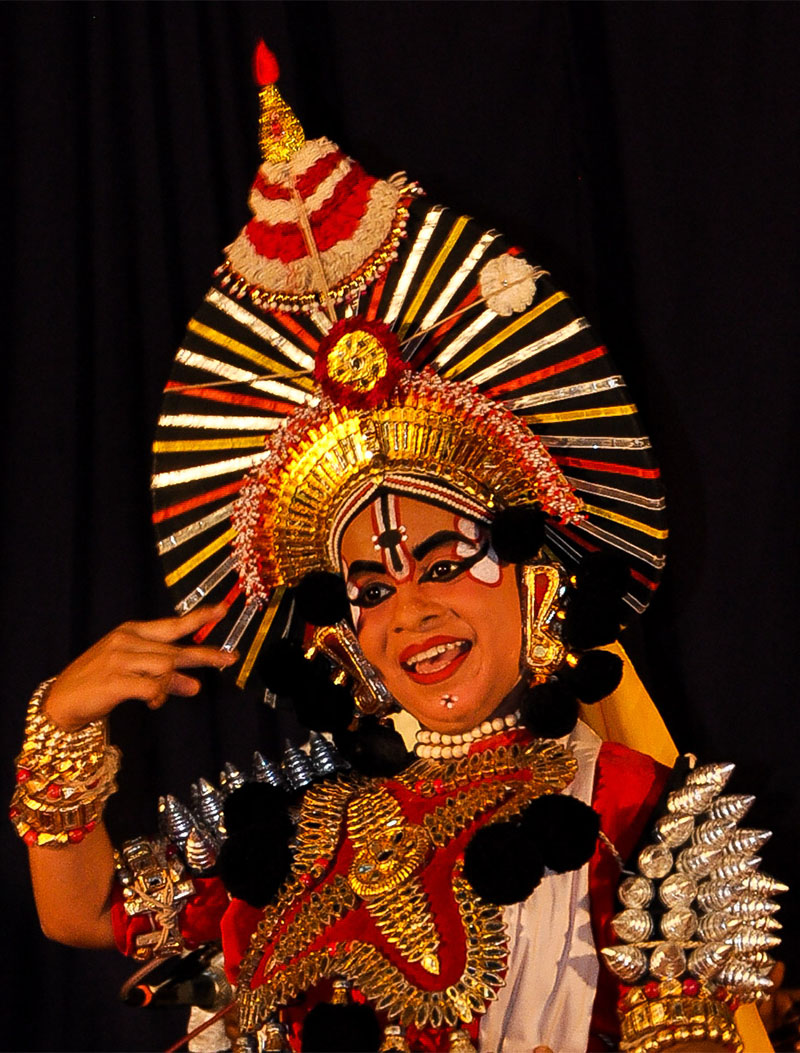ARTICLE
Bayalata Masks
Colourful masks used in open-air performances in the coastal parts of Karnataka and northern Kerala, bayalata masks generally cover the wearer’s entire face and can be used with makeup and elaborate headgear. They feature in all forms of open-air performances, including yakshagana.
For the Badagatettu Bayalata performances, three masks are usually employed: the head of the ashvamedha (sacrificial) horse; the mask for Nandi, who is the vahana or mount of Shiva; and the face of a spirit. Characters for bayalata masks are derived from the Puranas and other Hindu mythological sources like the Mahabharata. Another mask that is commonly used is the Narasimha mask.
Bayalata performances featuring these masks continue to be held across the southwest coast of India, and more generally across the state of Karnataka.
Bibliography
Our website is currently undergoing maintenance and re-design, due to which we have had to take down some of our bibliographies. While these will be re-published shortly, you can request references for specific articles by writing to hellomapacademy@map-india.org.







